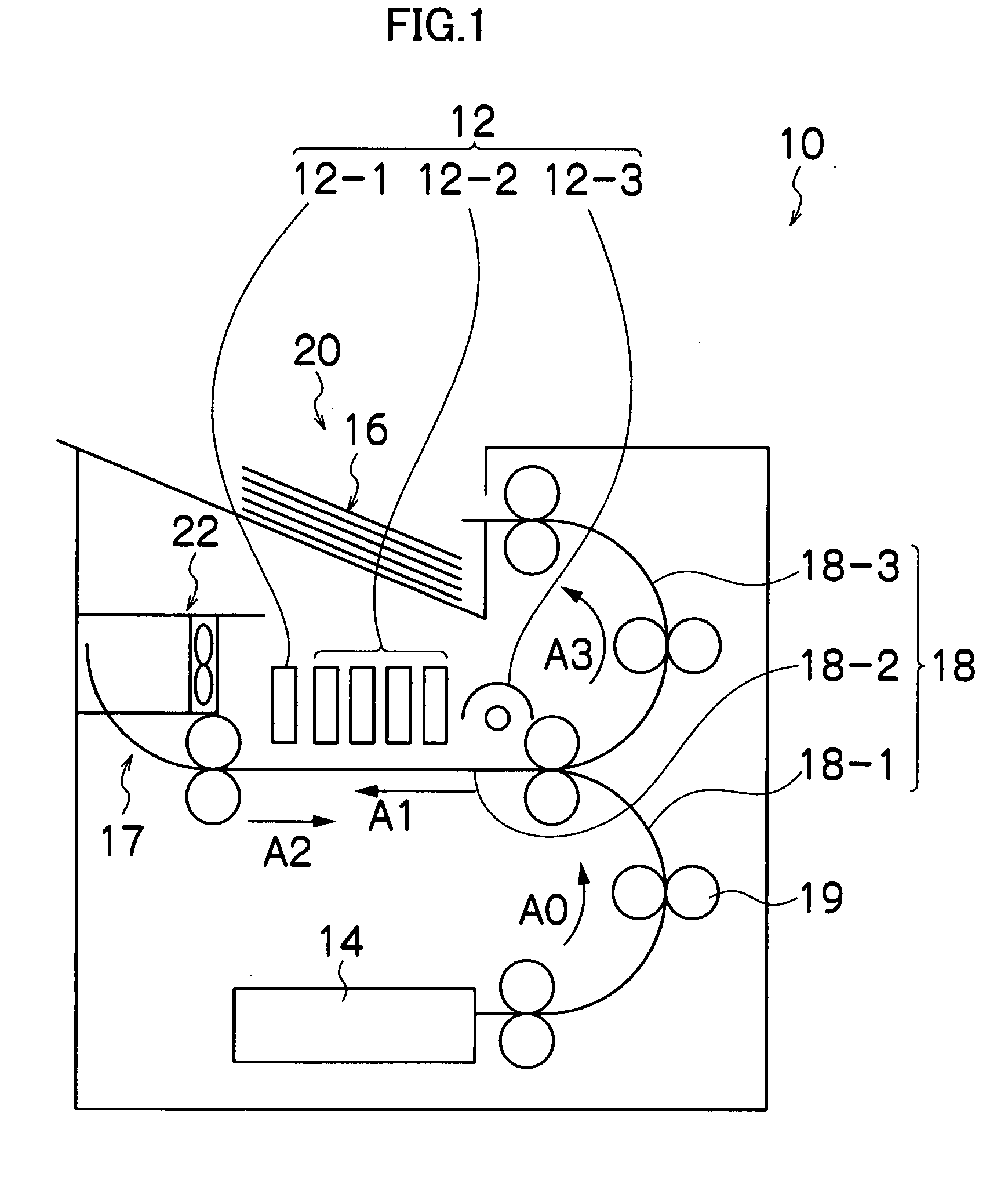Liquid ejection method, liquid ejection apparatus, double-side printing method and image recording apparatus for double-side printing
a liquid ejection and printing method technology, applied in the direction of printing, typewriters, other printing apparatus, etc., can solve the problems of nozzle blockage, nozzle surface solidification, nozzle contamination, etc., to prevent the occurrence of nozzle surface contamination and prevent contamination on the nozzle surface
- Summary
- Abstract
- Description
- Claims
- Application Information
AI Technical Summary
Benefits of technology
Problems solved by technology
Method used
Image
Examples
first embodiment
[0078]FIG. 1 is a general compositional diagram showing an approximate view of an inkjet recording apparatus serving as an image forming apparatus according to the present invention.
[0079]As shown in FIG. 1, the inkjet recording apparatus 10 according to the first embodiment comprises: a print unit 12 including a first liquid head group (first ejection head) 12-1 which ejects treatment liquid as a first liquid, a second liquid head group (including second ejection heads) 12-2 which ejects inks of colors as second liquids, and a UV (ultraviolet light) irradiation unit (radiation irradiation unit) 12-3; a paper supply unit 14 which supplies recording papers 16 to the print unit 12; a conveyance unit 18 which conveys the recording paper 16; and a paper output unit 20 which outputs printed recording papers 16 to the exterior.
[0080]In FIG. 1, the paper supply unit 14 is depicted as a cassette (media stacker) in which cut paper sheets are stacked and loaded, but the paper supply unit 14 i...
PUM
 Login to View More
Login to View More Abstract
Description
Claims
Application Information
 Login to View More
Login to View More - R&D
- Intellectual Property
- Life Sciences
- Materials
- Tech Scout
- Unparalleled Data Quality
- Higher Quality Content
- 60% Fewer Hallucinations
Browse by: Latest US Patents, China's latest patents, Technical Efficacy Thesaurus, Application Domain, Technology Topic, Popular Technical Reports.
© 2025 PatSnap. All rights reserved.Legal|Privacy policy|Modern Slavery Act Transparency Statement|Sitemap|About US| Contact US: help@patsnap.com



